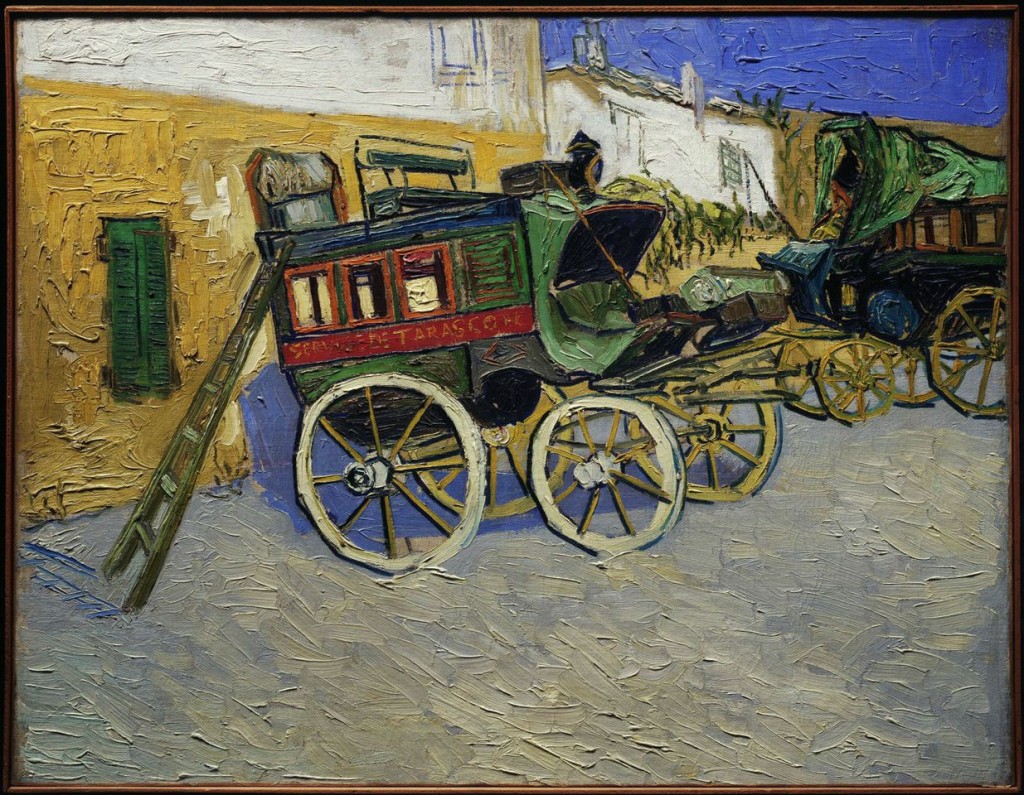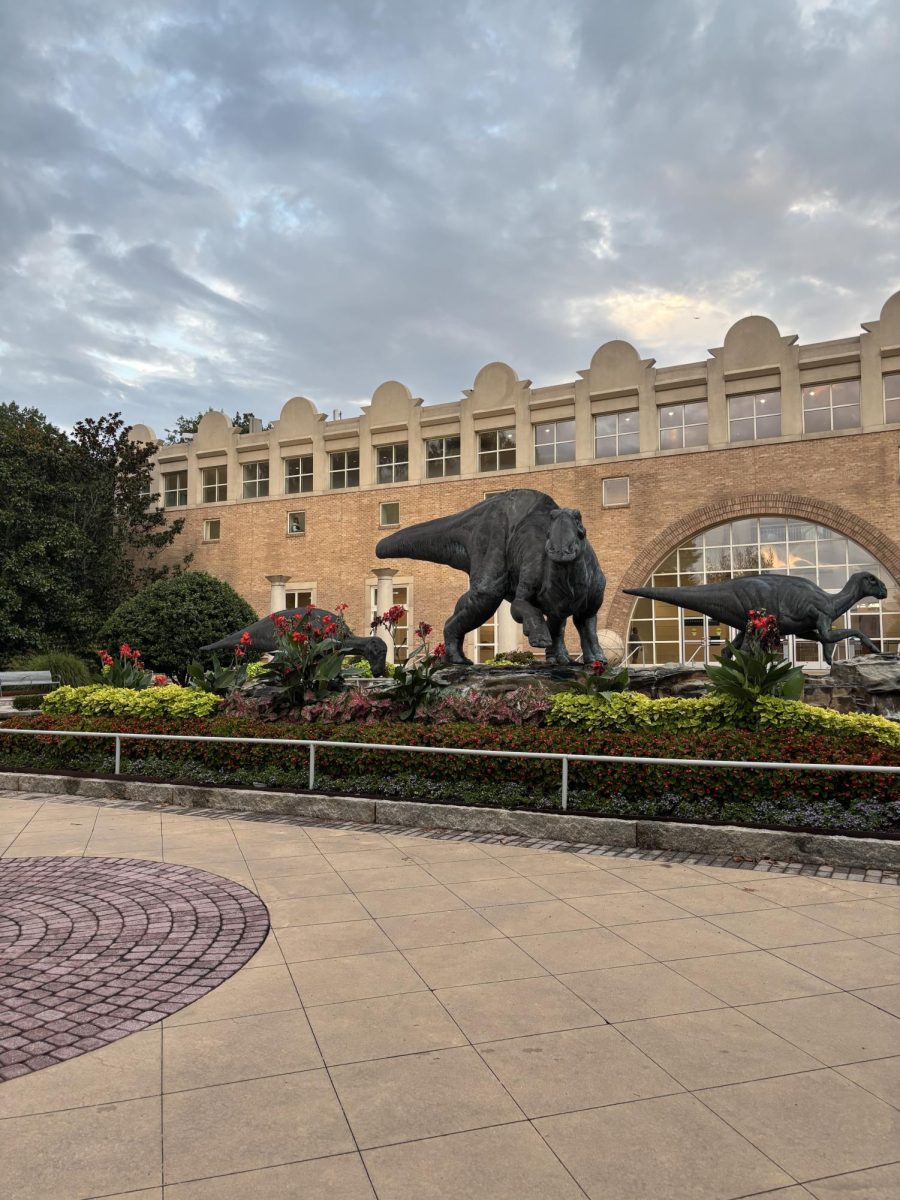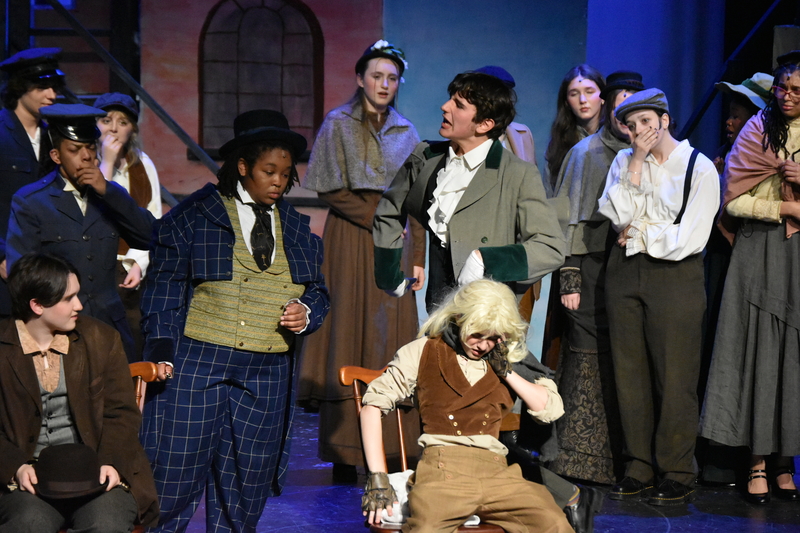
Everyone knows about the fabled life of Vincent Van Gogh. His severed ear is just as iconic as his paintings. Monet and Degas are also colloquially known, maybe the name Cézanne has popped up a few times, but Soutine, Pissaro, Modigliani? Not everyone is an art historian.
Throw a bit more art history garble into the mix– Post-Impressionism, Modernism, a disdain for traditional forms of perspective, flat yet highly pigmented color– and the High Museum’s Cézanne and the Modern exhibit seems downright uninviting.
“If you’ve never been to the High before, it seems like it’s only for people wearing monocles and hats,” said Katie Bush, the High Museum of Art’s Coordinator of Youth and Community Programs. “It seems like a very fancy place, but essentially my job here is to turn it into a second home for young people.”
Bush coordinates different programs for high school students, most of which are free and coincide with the museum’s major exhibits. A watercolor class on Nov. 1, for example, taught students to paint with the same layered technique as Paul Cézanne. Another event on Nov. 15, known as Crafternoon, taught them how to dye white clothing to make it look like wearable watercolors.
“We pulled the famous Cézanne painting that’s around the corner into Photoshop and used the color-picker to pick four different colors that we matched to the dyes,” Bush said. “The colors that [students] dyed their clothes [with] were actually four of the exact colors in that painting. Not many people know that, but I’m super proud of it.”
Bush also helped coordinate a poetry slam for students on Nov. 14.
“This month’s theme is family, so you’d learn about Cézanne and his relationship with his father, which was sort of rocky,” Bush said. “Hopefully, that would prompt people to write poetry about their own families, good and bad.”
Cézanne and the Modern, the focus of these programs, closes on Jan. 11. It showcases 24 Cézanne pieces, along with works by Van Gogh, Claude Monet, Amedeo Modigliani, Chaim Soutine and Henri de Toulouse Lautrec.
Somewhat unexpectedly, its story starts with Henry Pearlman, a self-made business man and the founder of Eastern Cold Storage Insulation Corporation. As unglamorous as it sounds, Cézanne and the Modern was the effort of a man made rich from refrigerated shipping.
With quite a lot of money that he didn’t know how to spend, Pearlman turned to collecting art. In the early 1940s, he first purchased a few American, French and Italian pieces, which, according to the High’s website, he proclaimed “decorative, but neither provocative nor moving.”
Pearlman was quick to sell these paintings after discovering Chaim Soutine. After purchasing Soutine’s View of Céret, he dove headfirst into the art world.
Soutine’s painting isn’t a conventional landscape. It looks violent, is very abstract and full of energy, and uses a thick application of paint.
It was when Pearlman began to learn more about Soutine and other Post-Impressionist painters that he discovered Paul Cézanne.
“What [Pearlman] decided to do was to collect on either side of Cézanne,” said Julia Forbes, the High Museum’s Shannon Landing Amos Head of Museum Interpretation and Digital Engagement. “He was really fascinated with Cézanne, and he amassed a big collection. But [Pearlman] wanted to know what came before him, where he came from, what came after him, who he influenced. [Cézanne] is someone who influenced so many different directions heading into modern art.”
Dennis Galucki, a visitor of the High and a Cézanne enthusiast, said that he loves the way Cézanne played with light, color, lines and space.

“I can really see how Picasso and other later artists referenced [Cézanne],” Galucki said. “He influenced and helped artists create modern art. His art is less about scene and more about what’s inside the artist’s mind. It’s less about images and more about expressing emotions.”
Perhaps Cézanne’s most famous subject matter was Mont Sainte Victoire, a view he often painted. He found something about the mountain near his studio (which was more a very tall hill than a mountain) quite captivating.
One of these works, shown in the exhibit, demonstrates Cézanne’s unique approach to painting.
“Cézanne painted in layers,” said Donna Miller, a docent for the museum. “He starts at the bottom and then moves up–he sort of paints with little blocks. It’s almost like the beginning of cubism, using geometric shapes and other elements like that, but it all comes together to form a beautiful picture.”
Cézanne drew from the earlier Impressionists to create his technique.
“In the late-1800s, the world was changing,” Forbes said. “The invention of the camera changed things. … If you could take a picture of something, how important was it really to paint a realistic-looking painting with no brushstrokes? Artists wanted to do things that were new and different.”
The seemingly unimportant invention of containing paint in tubes made artists more portable–they could then paint landscapes while actually outdoors.
The combination of these two factors led to the rise of Impressionism in the 1870s and 1880s.
“Artists began to think about a whole new subject matter, and the way light and atmosphere and time of day change the way something looks,” Forbes said.
Because their methods of painting weren’t photorealistic and their subject matters were often informal, the Impressionist painters weren’t accepted by France’s Académie des Beaux-Arts.
“It’s hard to imagine today because now everyone loves the Impressionists and their paintings are worth millions and millions, but at the time, they weren’t really accepted,” Miller said.
Because the Impressionists broke away from the rest of the art world, they occasionally scorned more traditional methods of painting.
One piece in the exhibit by Henri de Toulouse Lautrec, entitled The Sacred Grove, is a direct satire of an earlier piece entitled The Sacred Grove, Beloved of the Arts and Muses that was painted by Pierre Puvis de Chavannes. The original piece depicts angels and muses lounging in a forest.
“Toulouse Lautrec made fun of it by painting the same scene but with everyday men and women,” Miller said. “To show how scornful he was of the [Académie des Beaux-Arts], he included himself in the painting. He has his back to us, and he’s urinating.”
Pearlman acquired this piece, by far the largest in the collection, along with a few others by Toulouse Lautrec. He was often photographed in his home surrounded by his beloved paintings.
“Pearlman was special in that he really loved this stuff, and he lived with it,” Forbes said. “The art was really a part of his life and his work and his home.”

Pearlman was so fascinated by his collection that he even went so far as to travel to France and stand in the same spot that Cézanne had when painting Mont Sainte Victoire.
As the years passed by, Pearlman’s collection only grew bigger. He acquired a Vincent Van Gogh painting that had previously been lost.
“It turned up somewhere in South America, and Pearlman got really excited and went down there and bought it,” Bush said. “He just kept it in his office like anybody would.”
The piece, titled Tarascon Stagecoach, is unusual.
Painted a couple of years after the invention of the automobile, it shows Van Gogh’s nostalgia for the days when stagecoaches were the primary means of transportation.
In some areas, the paint is so thick that it casts a shadow on the rest of the painting. Yet in one spot behind a stagecoach wheel, Van Gogh left a rectangle of exposed canvas.
“You could look at the Van Gogh painting and see the really thick brushstrokes,” Bush said. “In real life it pops out at you, but in a photograph it’s really flattened. I don’t think that art is something you should experience from a screen. It’s something you should look at in real life.”
Pearlman would have agreed. Since the mid-1970s, the public has been able to view his collection at the Princeton University Art Museum.
“He didn’t make any odd stipulations like ‘they always have to stay together’ or ‘they can’t travel,’ ” Forbes said. “Pearlman wanted them to travel. These are very well-travelled paintings–people borrow them all the time. But as a group, as the Pearlman collection, they haven’t been on a tour together since 1974.”
The High Museum was lucky to host the Pearlman exhibition, which is also travelling to Vancouver, Canada and Oxford, England, before returning to its home in Princeton, N.J..
“I’m not sure that there’s anywhere else in the world where you could stand in a room with 24 Cézannes,” Forbes said. “That alone is a worthwhile experience. To be able to see not just one, but 24 of them–I know I’m an art history geek, but it gives me goosebumps when I stand in there.”
It isn’t just Cézanne that leaves an impression on visitors.
Bekah Galucki, a middle-schooler visiting the museum with her family, said that she especially appreciated the collection’s diversity. She pointed to a large portrait by Amedeo Modigliani as her favorite.
The painting, a depiction of the writer Jean Cocteau, has its own interesting backstory.
Cocteau had commissioned Modigliani to paint one of his highly stylized portraits but wasn’t happy with the result.
“Modigliani didn’t like [Cocteau], so he painted him the way he saw him,” Miller said. “It was a very good likeness, but you could definitely tell that there was no love lost between them.”
To put it simply, Modigliani painted Cocteau as a snob. Even today, something about his elongated face and small mouth gives off an undeniable air of arrogance.
Cocteau paid for the painting but claimed that it was too big to put in a cab and left it behind. He never returned for it.
Cocteau’s portrait highlights the changing times. Artists no longer had to paint what they directly saw, but were instead expressing emotions through their work.
“This is the part that makes us human,” Dennis Galucki said. “Cézanne bridged the times of his day, and he helps us bridge our times to help us become more human.”
The Pearlman collection reflects this shift in culture from the end of Impressionism to the beginning of modern and contemporary art.
“I want students to come and see the dawning of modernism, which is what influenced many contemporary artists,” Forbes said. “Come and see the history and look at it with fresh modern eyes.”







